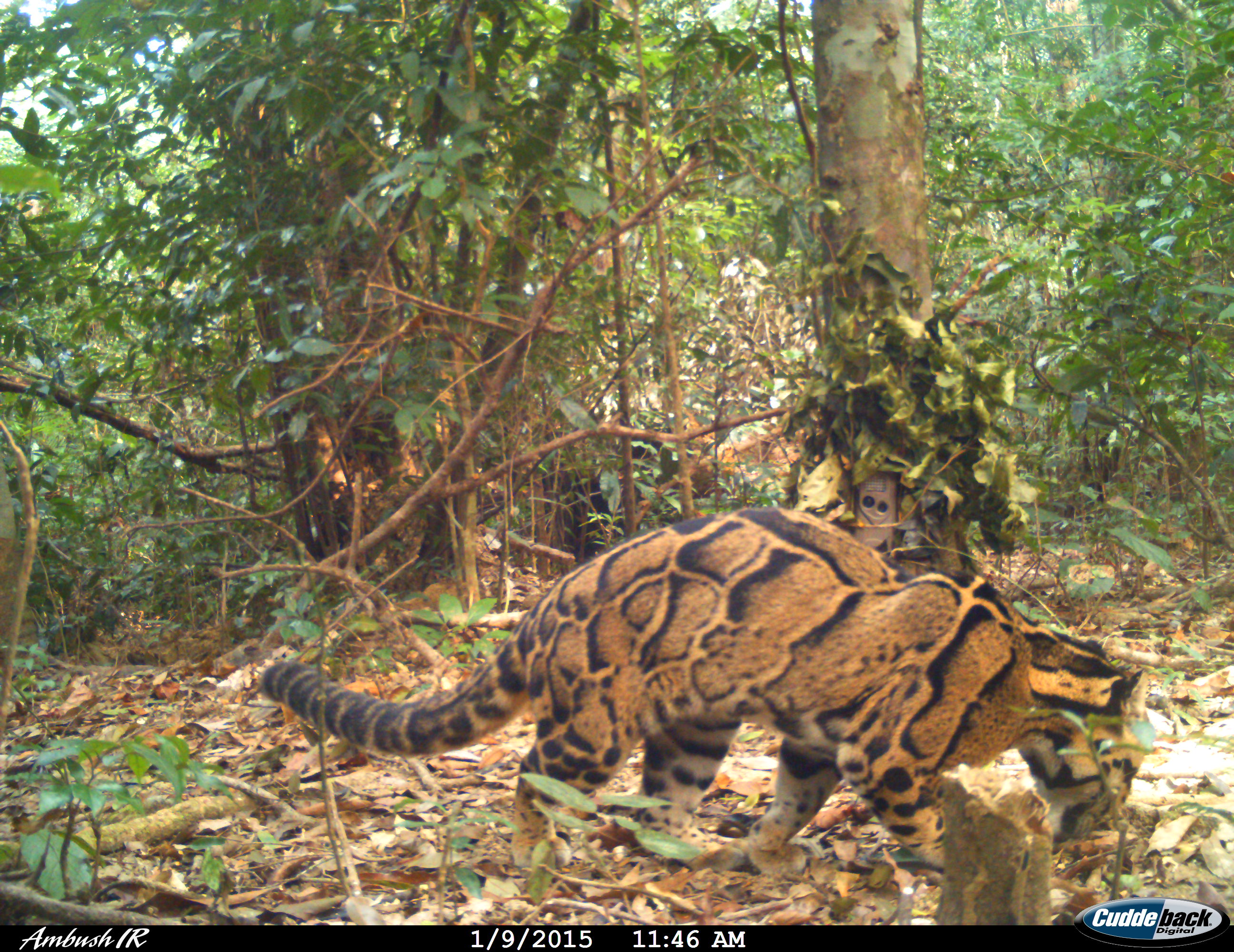News
WildCRU Toolkits bearing exciting fruit
An idea has germinated and flowered, writes David Macdonald in celebration of the first two published WildCRU Toolkit papers.
Almost ten years ago we consolidated our early work on clouded leopards in Sabah into a major field programme stretching from Nepal in the east to Kalimantan in the west. The first step was to unveil details of clouded leopard ecology in sites across nine countries covering the species range, each associated with a talented fieldworker (check out some of their papers). The next step was to integrate these local studies into two range-wide analyses of the habitat associations of the two species, the Sunda and mainland clouded leopards. More range-wide ecological outputs are in the pipeline, focusing on the felid guilds and wider biodiversity.
All this was intended to lay the foundation for our master plan: the integration of these ecological insights into national and regional development plans. We established excellent working relationships with governments and policy-makers throughout the Southeast Asia, and worked with them in a co-production framework to explore how realistic development and conservation plans might affect clouded leopards – chosen as ambassadors for wider forest biodiversity. The outputs were WildCRU Toolkits, virtual realities in which to explore the impacts of alternative development and conservation plans on clouded leopard populations, genetic diversity, distribution, connectivity and habitat quality. We are excited that the first two of this on-going series have now been published, one for Sabah and one for Myanmar. With appropriate modesty and also substantial pride we believe that these cutting edge papers provide the most rigorous examples to date of using sophisticated modeling and decision support tools to balance the tradeoffs between development and conservation. But these flowers of the early seed are just the start; the fruit will be the interactions with decision-makers that convert the toolkits into policy and conservation impact on the ground. Already, our long-term Sabah work underpinned the Sabah state Sunda clouded leopard Action Plan.
 Figure 1. Clouded leopard core areas prioritization.
Figure 1. Clouded leopard core areas prioritization.
 Figure 2. Number of species detected and number of camera trap stations set up in SE Asia.
Figure 2. Number of species detected and number of camera trap stations set up in SE Asia.
Read more about our Clouded Leopard Programme.
Selected Publications:
Haidir, I., Macdonald, D. W., & Linkie, M. (2020) Sunda clouded leopard Neofelis diardi densities and human activities in the humid evergreen rainforests of Sumatra. Oryx, 1-8.
Haidir, I. A., Macdonald, D. W., & Linkie, M. (2018). Assessing the spatiotemporal interactions of mesopredators in Sumatra’s tropical rainforest. PloS one, 13(9), e0202876.
Hearn, A. J., Cushman, S. A., Goossens, B., Macdonald, E., Ross, J., Hunter, L. T., … & Macdonald, D. W. (2018). Evaluating scenarios of landscape change for Sunda clouded leopard connectivity in a human dominated landscape. Biological Conservation, 222, 232-240.
Hearn, A. J., Cushman, S. A., Ross, J., Goossens, B., Hunter, L. T., & Macdonald, D. W. (2018). Spatio-temporal ecology of sympatric felids on Borneo. Evidence for resource partitioning?. PloS one, 13(7), e0200828.
Hearn, A. J., Cushman, S. A., Goossens, B., Ross, J., Macdonald, E. A., Hunter, L. T., & Macdonald, D. W. (2019). Predicting connectivity, population size and genetic diversity of Sunda clouded leopards across Sabah, Borneo. Landscape Ecology, 34(2), 275-290.
Macdonald, E. A., Cushman, S. A., Landguth, E. L., Hearn, A. J., Malhi, Y., & Macdonald, D. W. (2018). Simulating impacts of rapid forest loss on population size, connectivity and genetic diversity of Sunda clouded leopards (Neofelis diardi) in Borneo. PloS one, 13(9), e0196974.
Penjor, U., Macdonald, D. W., Wangchuk, S., Tandin, T., & Tan, C. K. W. (2018). Identifying important conservation areas for the clouded leopard Neofelis nebulosa in a mountainous landscape: Inference from spatial modeling techniques. Ecology and evolution, 8(8), 4278-4291.
Hearn, A. J., Ross, J., Bernard, H., Bakar, S. A., Goossens, B., Hunter, L. T., & Macdonald, D. W. (2019). Responses of Sunda clouded leopard Neofelis diardi population density to anthropogenic disturbance: refining estimates of its conservation status in Sabah. Oryx, 53(4), 643-653.
Naing, H., Ross, J., Burnham, D., Htun, S., & Macdonald, D. W. (2019). Population density estimates and conservation concern for clouded leopards Neofelis nebulosa, marbled cats Pardofelis marmorata and tigers Panthera tigris in Htamanthi Wildlife Sanctuary, Sagaing, Myanmar. Oryx, 53(4), 654-662.
Nájera, F., Hearn, A. J., Ross, J., Saldivar, D. A. R., Evans, M. N., Guerrero-Sanchez, S., … & RUEDA, L. R. (2017). Chemical immobilization of free-ranging and captive Sunda clouded leopards (Neofelis diardi) with two anesthetic protocols: medetomidine-ketamine and tiletamine-zolazepam. Journal of Veterinary Medical Science, 17-0259.
Ross, J., Hearn, A. J., Johnson, P. J., & Macdonald, D. W. (2013). Activity patterns and temporal avoidance by prey in response to Sunda clouded leopard predation risk. Journal of Zoology, 290(2), 96-106.
Singh, P., & Macdonald, D. W. (2017). Populations and activity patterns of clouded leopards and marbled cats in Dampa Tiger Reserve, India. Journal of Mammalogy, 98(5), 1453-1462.
Sollmann, R., Linkie, M., Haidir, I. A., & Macdonald, D. W. (2014). Bringing clarity to the clouded leopard Neofelis diardi: first density estimates from Sumatra. Oryx, 48(4), 536-539.
Tan, C. K. W., Rocha, D. G., Clements, G. R., Brenes-Mora, E., Hedges, L., Kawanishi, K., … & Wadey, J. (2017). Habitat use and predicted range for the mainland clouded leopard Neofelis nebulosa in Peninsular Malaysia. Biological Conservation, 206, 65-74.









